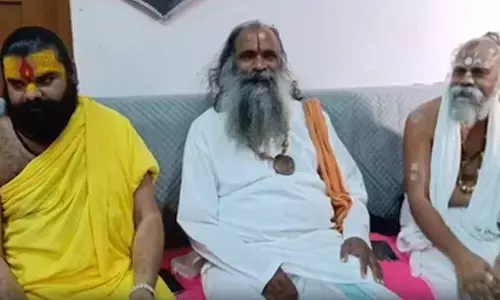Bullet train is a distant dream

R C Acharya: Bullet train is a distant dream,Sadananda Gowda in his maiden budget proudly announced the Railways\' plans to join the high- speed league, with the first-ever bullet train project to take off on a 540-km corridor from Ahmedabad to Mumbai, under the PPP (public- private- partnership) model, for which he made a token provision of Rs 100 crore for consultancy and feasibility studies.
Sadananda Gowda in his maiden budget proudly announced the Railways' plans to join the high- speed league, with the first-ever bullet train project to take off on a 540-km corridor from Ahmedabad to Mumbai, under the PPP (public- private- partnership) model, for which he made a token provision of Rs 100 crore for consultancy and feasibility studies.
To be a part of the Diamond Quadrilateral project of high-speed train network (bullet train), which was announced in the BJP's manifesto a few months back, it could be an onerous task to turn such a dream into a reality. It's an extremely costly business.
While a conventional new rail line for 130 km per hour speed may cost just Rs 5 crore, a high- speed track designed for 250-300 kmph is a money guzzler, costing over Rs 150 crore per km. An elevated dedicated corridor is inescapable for it to be trespasser free, especially when thousands of tonnes of steel are hurtling along at very high speeds.
Second, given the high cost, volumes are essential and world over — except in China, which built some corridors more as a showpiece — the service is more for daily commuters who may live as far as 500km yet choose to go to work and return home the same day almost on a daily basis.
Shinkansen, or bullet trains, introduced half- a- century ago, was such a commuter service. In the process, it connected about half-a-dozen stations between Tokyo and Osaka, which is 500km away, the frequency of trains being almost every five minutes during peak hours.
Third, the high performance trains, manufactured by major rolling stock builders, cost more than five times the conventional coaches being built by the Railways' own in-house facilities for Swiss design coaches at ICF (Integral Coach Factory) at Perambur near Chennai and recent German design LHB ( Linke Hauffman Busch) coaches at Kapurthala in Punjab.
Gowda also announced low-cost high-speed solutions, which involve enhancing speed from 110 kmph to 160 kmph on some selected routes such as Delhi- Agra (for which a successful trial run had been recently made), Delhi- Chandigarh, Delhi- Kanpur and Mysore- Bangalore- Chennai.
However, though the 300 kmph variety may be a distant dream, the low-cost option could prove to be a game-changer by connecting cities within 500 km radius of a metro, enabling a commute of just under three hours, saving the traveller hassles of a long drive to and from the airport, security checks and uncertainty created during those foggy days.
Another plus point is the possibility of it slowing down migration to major urban centres from smaller cities, and may be even start a reverse migration for those who prefer a more relaxed and tension- free life of a small city instead of a crowded existence in one of those faceless highrise towers sprouting all over major metros.
Indeed, the concept of high-speed trains has been highly successful in countries such as Spain where all major cities are within a 500 km radius of Madrid, its capital. It could be ideal for linking Calcutta to Dhanbad, Haldia and Jamshedpur.
The format of the budget speech was the usual reeling out of numbers, scores of passenger amenity schemes and a few high tech initiatives in communication such as GPS-based tracking of trains on a real-time basis, and passenger reservation system being upgraded to issue 72,000 tickets per minute, with 1.2 lakh people accessing it simultaneously.
However it appears that the Modi government has yet to realise the gravity of the financial mess the Railways find itself in, with the operating ratio touching 94 per cent.
According to Gowda, the surplus available with the Railways has plunged from Rs 11,754 crore in 2007- 08 to Rs 602 crore this year, leaving little room for planning anything big. Of the 676 projects in the pipeline, only 356 have been completed, for which Rs 50,000 crore every year for the next 10 years will be required.
A slew of measures to garner funds for ongoing projects were announced, including public-private partnership, which has so far been far from successful in both railway and road projects. How much and how soon of this will materialise is anybody's guess!



















